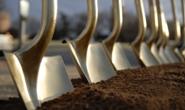Analysis

June 19, 2016
Housing Starts Slip in May
Written by Sandy Williams
Housing starts in May fell 0.3 percent from April’s revised estimate of 1,167,000 to a seasonally adjusted annual rate of 1,138,000, according to the Department of Commerce. The rate, however, was 9.5 percent above the May 2015 estimate. The month-to-month slip was due to construction of fewer multi-family housing units.
“Despite May’s relatively flat report, our builders are telling us that the market is improving and consumers are more ready and willing to make a home purchase,” said NAHB Chairman Ed Brady.
NAHB chief economist Rob Dietz said the rise in builder confidence this month and the year-over-year rise in single family starts are indicators for further growth in housing production. “However, builders continue to face supply-side constraints, such as shortages of buildable lots and labor,” said Dietz.
Building permit authorizations, an indication of future construction, rose by 0.7 percent from April to a SAAR of 1.138 million, from a revised April rate of 1.130 million. Single family authorizations were down by 2 percent from April but permits for multifamily units of five or more were up 6.7 percent.
Regional data
Regionally, combined single-and multi-family starts rose in the West and South, 14.4 percent and 1.5 percent, respectively. Midwest starts dipped 2.5 percent while the Northeast fell 33.3 percent. Single family starts were up in the Northeast, South and West.
Combined permit authorizations increased 15.3 percent in the West while the rest of the regions registered losses: South down 1.4 percent, Northeast down 7.8 percent, and the Midwest down 9.2 percent.







